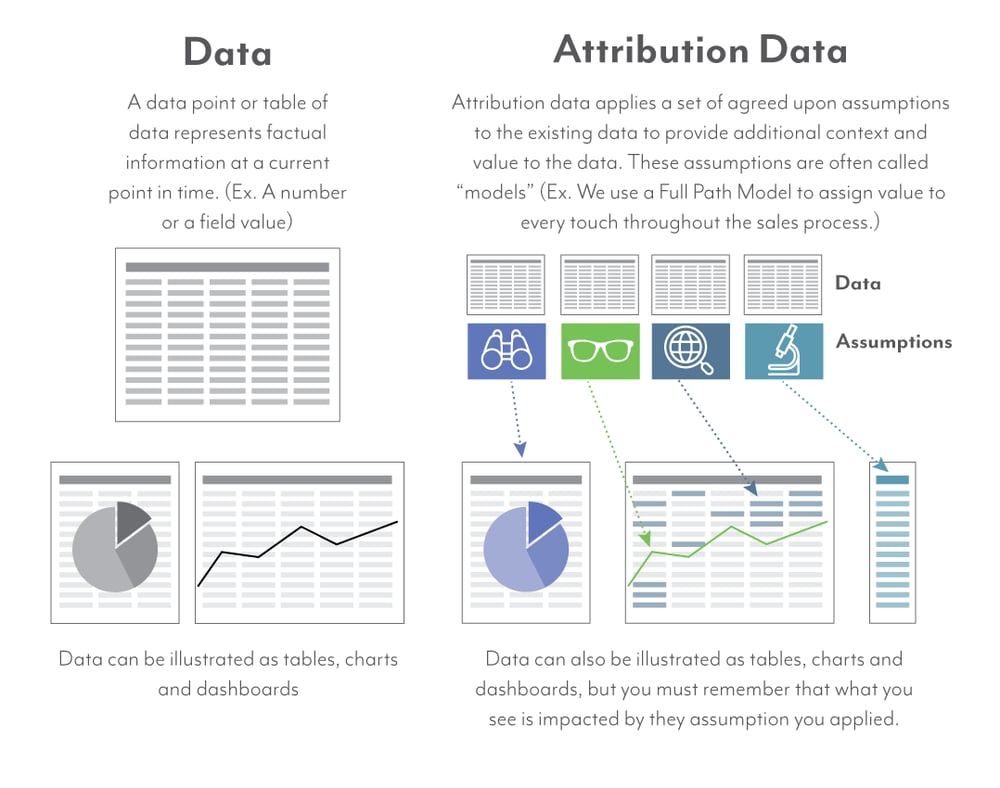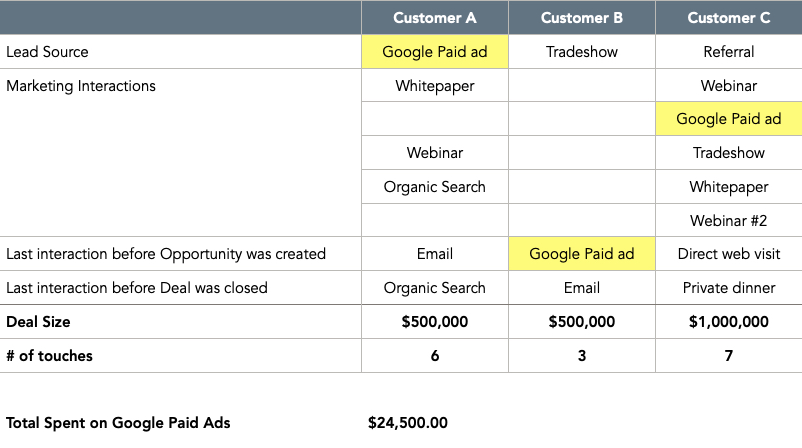Attribution Habit #6
The Models Help You Make Sense of your Data
You don't need to be a data scientist to understand how to understand attribution. However, it is really important to have a solid grasp on the difference between true marketing reports and attribution reports.

Most of us come into doing Marketing Attribution after a long history of doing standard marketing reporting. We know landing page views, unique visitors and email clicks. All things that are somewhat definitive.
There needs to be a mental shift in order to make sense of your attribution reports. We can’t just report on the data related to marketing touches. In order to determine their value, we have to make some assumptions about how to the define value of a specific or group of marketing touches.
Let’s continue with our sample from the Habit #5 email - “Should we invest more in paid search?” To jog your memory, here is our real world set of data.

Deeper Question
Attribution Model
Does paid search create leads?
Simple report of the number of leads created by Google Paid ads
Are the leads created good leads?
Aka - do these leads drive revenue?
Lead Creation Model - Applies ALL future revenue from those leads to Google Paid ads as that was the channel that created the leads.
How does this channel impact revenue across the board?
Even Split Model - Considers the revenue for each customer and applies an evenly weighted amount of revenue to each touch. (Example, 4 touches means that each touch would have 25% of the revenue as part of the equation)
Imagine we spent $24,500 on Google ads. How will we determine if we should invest more in Google Paid ads?
For the Lead Creation model we only want to look at deals that originated with leads that came from Google Paid ads. This means we only care about the revenue from Customer A.
As you can see—even with this very simplified version—it is hard to answer the question “Should we invest more in paid search”? Paid search lead to the creation of Customer A, and influenced Customer B and Customer C at different points of the sales process.

Based on the Lead Creation model alone, it appears that Google ads have a very high ROI. However, that is only part of the story. How do these paid search ads impact all of our opportunities?
This is where the Even Split model can help provide more context. Using the Even Split model we can see that Google ads do impact revenue, although not nearly as effectively as we thought when we looked at the Lead Creation model.

This is merely a small example to help illustrate how the different models incorporate the R and I parts of ROI. In the real world, we are dealing with thousands of touchpoints across hundreds of opportunities spanning huge amounts of time. Attribution reports can get complex quickly. Success comes when you learn to simplify your questions to make the information you need accessible.
I've been fortunate enough to work with many companies setting up and improving their attribution reports and there is one common thread: The information is valuable, but it can be hard to understand how to take action. Don't be discouraged if it doesn't make sense intuitively. With time and practice, understanding how the models help you make decisions becomes much more natural.
Download a PDF that includes all the example data shown above.
